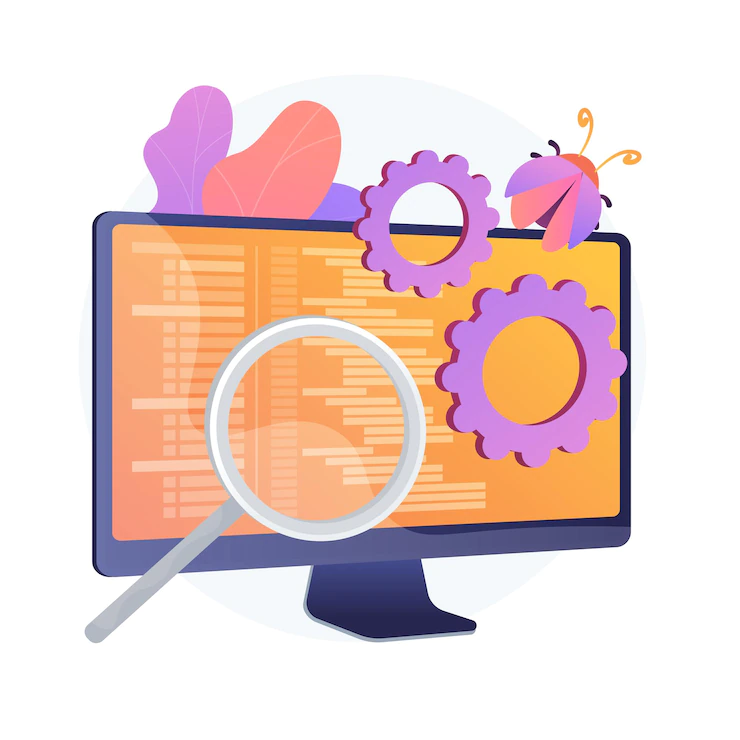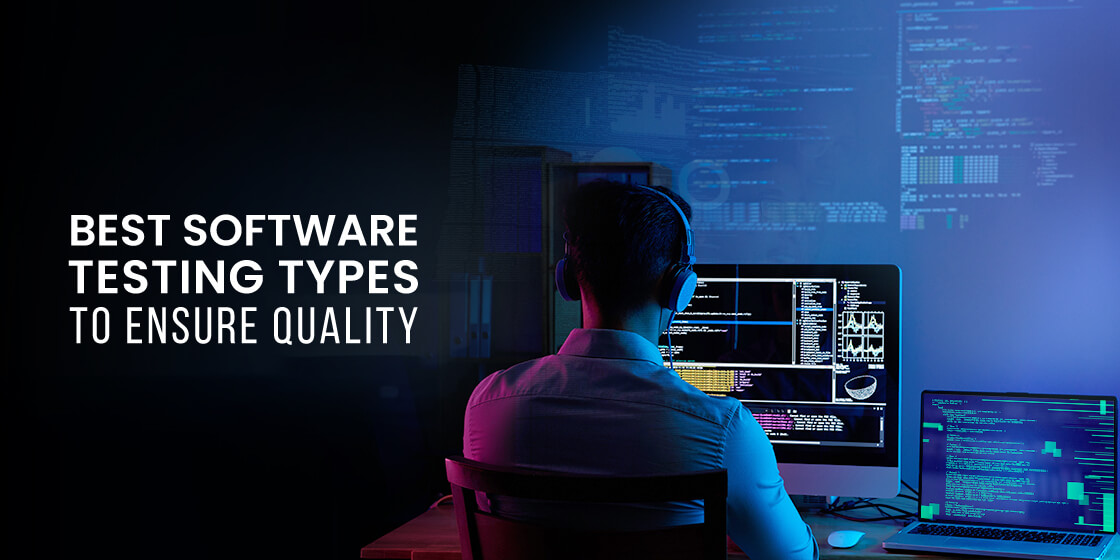Find All of the Popular Types of Software Testing Processes That Testers Use Nowadays
The world of software testing is a vast field full of different techniques and methodologies. To that extent, us testers and QA specialists are well versed in implementing the specific software testing types that we use in our daily lives.
Now, there are a number of different types of software testing that many of us aren’t in the habit of using, despite working in the field for a while. And while each of these software testing process has its advantages and disadvantages, many of us forget about them after a while.
Therefore, let’s take a look at some of the most popular techniques of software testing, and discover how they can be used by testing and quality assurance services companies.
What Are the Various Types of Testing Methodologies in The Software Industry?
Essentially, the software testing types are divided into two major categories, based on their mode of operation. The two types are named:
- Manual Testing
- Automation Testing
Manual Testing
Manual testing is a hand-on approach to software testing, where every parameter and software development methodology is overseen by the tester themselves. This type of testing is limited in scope, and while popular, is often difficult to scale properly.
Automation Testing
Automation testing is the use of specialized software testing tools and pre-written test scripts to perform the same tests as manual testing on the software in question. This is more versatile in terms of scope, and can be scaled up quite easily. Moreover, the accuracy of the testing services provided in better with automated testing tools too.
Common Types of Manual Testing
Essentially, there are two major types of manual testing. Each type has its own purposes, and contains several subtypes of testing processes for use by testers and QA professionals. The basic tenet of these types of software testing techniques is that each test procedure will require a dedicated QA tester to oversee and make the required changes and tweaks.
The two types of testing strategies that make up manual testing are:
- Black Box Testing
- White Box Testing
Manual Vs. Automation Testing – What Strategy Do I Need?
At the lower, simpler levels of software testing, manual testing or automated could be used interchangeably without issue. However, at higher levels of testing complexities, there is a distinct difference between the application of the two techniques.
Manual testing requires a tester perform the testing procedure in person, by interacting with the application or the API with the right .NET development tools. However, this manual approach has its drawback. The human element often results in higher costs, as well as increases the risk of errors of issues missed due to the tester being unable to replicate the right testing environment.
Automated testing, on the other hand, is run automatically using a pre-written script. Now, the quality of the tests performed depends on the quality of the script fed into the tool, but for the most part, automation testing is more productive in a true testing environment.
Test Automation Frameworks and Implementation Strategies
While automation testing was introduced earlier, understanding specific automation frameworks and implementation strategies is crucial for organizations looking to scale their testing efforts effectively. Modern test automation goes far beyond simple script execution to encompass comprehensive frameworks that support maintainable, scalable, and efficient testing processes.
Popular automation frameworks include data-driven frameworks, keyword-driven frameworks, and hybrid frameworks that combine multiple approaches. Each framework type offers distinct advantages: data-driven frameworks excel at testing multiple data sets, keyword-driven frameworks provide non-technical team members with testing capabilities, and hybrid frameworks offer maximum flexibility for complex testing scenarios.
Implementation strategies should consider factors such as team expertise, application complexity, maintenance requirements, and integration with existing development workflows. Successful automation implementation requires careful planning around test data management, environment setup, continuous integration pipelines, and result reporting mechanisms.
Organizations embracing AI software testing strategies are increasingly incorporating machine learning and artificial intelligence into their automation frameworks to improve test coverage and reduce maintenance overhead.
The software testing lifecycle must accommodate automation framework selection and implementation phases. Companies offering software testing tools and services often provide expertise in framework selection and implementation as part of comprehensive QA testing solutions.
Black Box Testing and The Software Testing Types It Contains

Black box testing is one of the manual software testing types where the tester will check to see if the software product fulfills the requirements brief. I not, they will create and submit a report regarding the defects found to the development team for rectification.
Once the developers have made the desired changes, and tested it themselves, they send it back to the test and QA team for another round of black box testing. Essentially, the entire purpose of this type of testing is to ensure that the clients/user needs are being met by the software product we have developed.
Black box testing is further divided into two different types of software testing, namely functional and non-functional testing. Let’s take a look at what they are.
Stuck with a software application ridden with errors and bugs? Get expert QA and testing services now to ensure streamline software performance.
Contact NowFunctional Testing
As the name suggests, this type of black box testing tests the functions and components of the software product. That is often why functional testing is also called component testing sometimes.
In this type of testing, each component is tested by giving it an input value, and then comparing the generated response against the expected result. This way, QA testers can ensure that the feature, going through all the modules needed to fulfil the project’s functional requirements works as it should.
To put it simply, functional testing is all about making sure that the product adheres to the project requirements. It does not delve into the coding intricacies of the software, but rather their application and functionality.
The tests performed during functional testing include:
- Unit testing
- System testing
- Acceptance testing
Non-Functional Testing
Non-functional testing is the type of black box testing that tests the product performance and the underlying coding procedures. These software testing types check for any underlying issues that may result in affecting the performance or usability of the software product in question.
The tests commonly performed during non-functional testing include:
- Performance testing
- Load Testing vs Stress Testing:
- Compatibility testing
- Usability testing
- Security Testing
What Types of Software Testing Are Considered Within Functional Testing?
Let’s take a detailed look at the different software testing types that make up the functional testing stage.
Unit Testing
Unit testing is the initial step of the functional testing stage. In this software testing process, the testing expert would test individual elements of the software, or will test the functionality of related elements together as a unit, hence the name.
For clarity, when we say talk about a unit here, it refers to an entity or a set of entities that work to fulfill a specific function. Essentially, it tests the performance of all the elements that work to form a single testable element of the software.
System Testing
System testing includes the software testing types where the QA specialist would test the entire system to see if it works according to the requirements. Just like the unit testing that checks to see if individual elements or functions of the software work as required, the system testing procedures ensure that the complete project works together as expected.
Now, when we talk about a system here, we refer to the collection of elements that combine together to form a complete software product. Essentially, if these elements are given the go-ahead in the unit testing phase, they are next moved on to system checking to ensure their perfect working functionality as a single, system-level unit.
Acceptance Testing
Next up, we have acceptance testing. The acceptance testing phase is begun once the software product passes the system testing stage, and is given the all-clear. In this stage of functional testing, the intensively tested software is released to the client, who tests it using real-time scenarios that your software might experience when released. That is why it is also known as the User Acceptance Testing, or UAT for short.
Now, the purpose of using your client/customer to test the product at this stage is to get a fresh testing perspective, especially one that might be quite similar to the actual end-user experience. A user/client will only approve the project once they are sure that all functionalities work as expected. And once approved, the software product goes into production.
Non-Functional Testing and The Software Testing Types It Consists of

As we discussed earlier, non-functional QA testing refers to the types of software testing where the internal structure, code complexity, and various performance and other metrics are tested to ensure that the end product doesn’t just work well, it is also robust and secure.
Let’s take a look at some of the software testing types that make up the non-functional testing group.
Performance Testing
Performance testing is all about testing how quick and stable your software product is under peak performance load. Most software products, if designed adequately well, do well under light to moderate load. But by testing them with above-normal load levels, a testing expert ensures that the end-product will still work well under higher than average workload.
When we talk about quickness of a software here, it refers to the speed at which it performs the tasks that are assigned to it. The quicker it is, the higher the chance that the consumer would love, it, even with a few minor flaws.
Stability however, refers to the ability of a software to stand a higher than average workload without affecting its normal behavior. And once the product passes through performance testing, it can be said to be a fast and robust software system.
Load Testing vs Stress Testing: Understanding Performance Boundaries
While performance testing was mentioned earlier, it’s crucial to understand the specific distinctions between load testing and stress testing, as each serves different purposes in ensuring application reliability under varying conditions.
Load testing involves applying normal expected load conditions to verify that the application can handle anticipated user traffic without performance degradation. This testing type helps establish baseline performance metrics and ensures the system meets specified performance requirements under typical usage scenarios. Load testing typically uses realistic user scenarios and data volumes that mirror production environments.
Stress testing, on the other hand, deliberately pushes the system beyond its normal operational capacity to identify breaking points and observe how the system behaves under extreme conditions. This testing helps identify the maximum load the system can handle before failing and determines how gracefully the system degrades under excessive stress.
Both testing types are essential components of software quality management and are particularly critical for applications expecting high user volumes.
Organizations following lean software development principles often integrate these testing approaches early in the development cycle. Companies specializing in web application testing must master both approaches to ensure robust application performance.
Compatibility Testing
As the name suggests, compatibility testing is a type of software testing procedure that is designed to test how a software product performs in different environments. For example, a web app may be tested on how it performs and acts when opened in different web browsers, to check for any issues that might crop up if a user accesses it on different browsers.
Similarly, mobile apps may be tested on different hardware platforms and OS versions to check for any compatibility issues that an end-user might face. For example, an android app designed for Android 7 might behave weirdly for devices running Android 10, due to issues with backwards compatibility that were not addressed when developed.
But using compatibility testing measures, QA testers can ensure that the issue would be found if present, before the product is launched for the market.
Usability Testing
Usability testing, as the name suggests, is all about testing how the software product would perform and feel like from an end-user’s perspective. When testers perform usability testing, they check for issues such as ease-of-use, the flow of the customer journey, the visual experience, as well as the intuitiveness of the various options provided.
For example, a mobile app designed for social activities, such as a messaging app, will often perform usability testing to check how well the app fits in the current social environment. The app should be easy to use one-handed, for quicker texts on the go. Moreover, the look and theme of the screen should be customizable to cater to the users’ individual needs.
Finally, it should have a UI that is intuitive to understand, for example, when a user wants to log out of their account, the ensuing popup that asks the user to confirm their action should have the “NO” button highlighted already, instead of the “CONFIRM” button, to reduce accidental logouts.
That is what usability testing is all about in software testing.
Security Testing
Security testing is one of the few types of software testing that requires a highly specialized team of professionals to perform effectively. Essentially, these testing procedures are designed to make sure that the vulnerabilities and back-door channels are found out and rectified before the software is released to the market.
Often, we see developers leave channels and ways that may be found and used by people with malicious intent to exploit or sabotage your software product. And that is especially true for software that collects and stores user data.
Because while a user may trust you to use their data in a safe, legal manner, the hacker could use it to harm or sabotage your users for their own profit. And as the data would be made vulnerable from your end, it would you and your company that would be liable for compensation.
That is why companies hire professional security testers who test their software products and ensure that they are safe from all kinds of threats. It also checks how effective your authorization and encryption methods are, for added layers of security on your data. Moreover, it tests how the software might behave in case of a malicious attack, and how it might be made more secure after a hacking attack.
Other Types of Software Testing Used by Testers and QAs

Besides the software testing types we have discussed earlier, let’s take a look at some of the other popular types of software testing.
Integration Testing
Integration testing tests for issues in areas where different elements or modules join together to fulfill a function. As the name suggests, integration testing offers to look for issues when elements with different functions are joined together for to fulfill a bigger purpose.
For example, an ecommerce website’s online ordering feature would require the testing of different individual elements like user authentication module, payment gateway module, and the shopping cart module to work together effectively.
If one of these three elements is not integrated into the system perfectly, users will not be able to use the ecommerce feature, no matter how well the rest of the site works.
API Testing: Ensuring Seamless Data Exchange
API (Application Programming Interface) testing has become increasingly critical in today’s interconnected software ecosystem. Unlike traditional UI testing, API testing focuses on the business logic layer of software architecture, testing data exchange between different software systems and ensuring that APIs deliver the expected functionality, reliability, and performance.
API testing involves validating data exchange formats (JSON, XML), response times, error handling, and authentication mechanisms. This type of testing is particularly valuable because it can identify issues early in the development cycle, often before the user interface is fully developed. Modern applications rely heavily on third-party integrations, microservices architectures, and cloud-based services, making API testing essential for maintaining system reliability.
Key aspects of API testing include endpoint testing, data validation, error code verification, and security testing for authentication and authorization.
Companies implementing comprehensive software quality assurance (SQA) importance strategies recognize API testing as a cornerstone of modern testing methodologies. For organizations considering QA outsourcing, API testing expertise is often a critical requirement.
Smoke Testing
Smoke testing refers to the checking of checking all functionalities of a software, from the most basic to the extremely critical, work well before the testers dives down for deep-set issues. It is one of the earliest software testing types that is performed on a software product.
For example, a tester testing an ecommerce site will check all the different functions of the website like filtering products, adding items to cart, signing up, and more, to check if these work as they should with no major issue. If that is the case, only then do they move on to the deeper issues discussed in earlier.
Once the development team creates a new build of the software, the testing and QA team will smoke test it for major issue. If none are found, the build id validated, meaning that the build is stable and is ready for a more in-depth testing phase.
Browser Compatibility Testing
Browser compatibility testing are specialized types of software testing procedures that belong to the compatibility testing group. Essentially, they test whether the web app or website works as expected on different operating systems or the various browsers available in the market.
It is also used to check if your web-based software product is able to run on different versions of the browsers, and whether it supports backwards compatibility with older versions. Moreover, it also checks how you have addressed the issue of slow or lagging networks in order to allow your users to use your services, such as having a lite mode.
Regression Testing
Regression testing is one of the most important types of software testing, and is essential before a product is launched to the market. Regression testing checks the unmodified features and elements of the software product, and ensures that any bug fixes, updates, removals, and any other modifications are not affecting the application.
Finding out the regression scope is extremely important in these software testing types. And in order to find it, testers will identify and isolate the areas where the modification were made, as well as the range of their impact on the project.
Regression testing is often very hard to perform manually. That is why many testers and QA specialists prefer using software testing tools for automation to run regression testing procedures.
Vulnerability Testing
Nowadays, with data such an important commodity, it is necessary for companies to hire dedicated developers and proper testing specialists who will test for any vulnerabilities that may make your data unsecure. In these types of software testing procedures, testers check for vulnerabilities in the hardware, software, and network aspects of the software product to see how easy it is to find and exploit these issues.
Nowadays, with data such an important commodity, it is necessary for companies to hire the proper testing specialists who will test for any vulnerabilities that may make your data unsecure.
Conclusion
Knowing the different software testing types used by testers nowadays is just part of the battle when you are starting out to be a software tester. Implementing these techniques properly to ensure that you release a robust, secure, and, and high performance software product to the market is what you need to ensure.
Different types of software testing often requires different expertise, especially ones like security or vulnerability testing. For these highly specialized fields of QA testing, you need to find the right software outsourcing company that can help you connect with talented professionals.
If you require expert QA specialists to test your software product, BariTechSol is here to help you with all your software testing and quality assurance needs.
FAQs
| What is alpha and beta testing? Alpha testing procedures are types of software testing that are designed to ensure that your software product is free of any issues and bugs. Beta testing, on the other hand, is the application of real world use cases to test your software before a grand launch, by releasing the product to a small, select group of users. |
| What is QA testing in software testing? QA testing is more than fixing any bugs within your software product. QA, or quality assurance, is designed to ensure that your finished software product adheres to the standards required and expected of a product like this in the market, from factors such as UI, performance, ease of use, and more playing a large factor in this. |
| What is API testing? API testing is the type of software testing that checks to see if an API performs as well as is required of it, in terms of performance, security, functionality, and more. |
Empower your digital initiatives with BariTechSol, a premier custom software development company. Our skilled team tailors cutting-edge solutions to your unique needs. Elevate your tech experience and stay ahead in the digital realm. Partner with BaritechSol and code the success of your next big idea.


